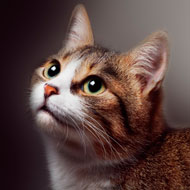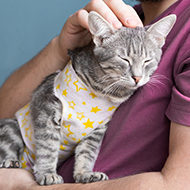VN develops pain assessment tool for cats

Gillian and her team also assessed facial expressions as an indicator of acute pain in cats.
A veterinary nurse has developed the world's first acute pain assessment tool for cats based on psychometric methodology.
The development follows the success of the behaviour-based Glasgow CMPS-SF for dogs, which is now generally accepted as a clinical standard for the measurement of acute pain in that species.
Senior practitioner nurse Gillian Calvo, along with her team of world renowned specialists in the field of pain management, spent many years developing and refining the clinically significant tool, known as the Composite Measure Pain Scale - Feline (CMPS-F).
The CMPS-F tool evaluates acute pain in six behavioural categories; vocalisation, activity/posture, attention to wound, response to people, response to touch, and demeanour. Each of the categories is given a score and a total score out of a possible 16 is derived. If a total score of four of higher is achieved, then users should consider intervention with analgesia.
Gillian and her team also assessed facial expressions as an indicator of acute pain in cats - the first study of its kind to demonstrate that facial features can be used to determine acute pain in cats.
The team are also determined to further develop the CMPS-F tool to include the incorporation of a facial expression component with the aim of improving sensitivity of the scale.
Gillian Calvo said: “I am absolutely delighted to have been part of the development of this ground-breaking CMPS-F tool which is available for veterinary professionals to use as an adjunct to their clinical judgement when assessing acute pain in cats.
I feel immensely privileged to have had the opportunity to be the voice for so many felines and can’t wait to see the difference the CMPS-F tool will make to the lives of so many cats, vets and vet nurses worldwide”.
Gillian's paper “Development of a behaviour based measurement tool with defined intervention level for assessing acute pain in cats” is published in the Journal of Small Animal Practice.



 RCVS Knowledge has called on vet practices to audit their post-operative neutering outcomes.
RCVS Knowledge has called on vet practices to audit their post-operative neutering outcomes.